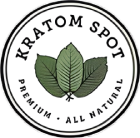
If you’re a Kratom enthusiast, you most likely are regularly on the lookout for the latest Kratom ban news. After all, a ban on Kratom would eliminate or severely hamper your ability to legally purchase high-quality Kratom. The major threat to consumers in the United States is, of course, the FDA, which has taken an aggressive stance against this traditional plant; however, it’s not the first plant to fall within their crosshairs. Let’s take a look at how we got here, where, exactly “here” is, and where we could be headed with legal Kratom product access in the United States.
The Kratom Ban: Kratom is Traditional, Not Controversial
Before talking about Kratom ban news, it’s important to understand what Kratom is. For centuries, Kratom has been used by the indigenous peoples of Southeast Asia as a medicinal plant. This tropical evergreen grows well in the lush rainforests and jungles of the region. Spurred on by the wet, acidic soil, its leaves grow potent with alkaloids that have traditionally been attributed properties that promote healing, wellness, concentration, and stress relief.
While it has long been harvested for local use, Kratom’s sustainable cultivation methods have fast become an answer to large deforestation tactics used by other industries to exploit the rich jungles’ agricultural potential. As a growing cash crop, Kratom has allowed small farmers to fight off the efforts of Big Timber to clear cut large swathes of forest and encouraged biodiversity rather than the creation of large, monoculture palm oil plantations. International interest in Kratom and the Kratom ban is doing more than helping people around the world access a traditional ethnobotanical: it’s actively protecting valuable rainforests.
Kratom In The United States
Americans first became aware of Kratom as soldiers returned from the Vietnam war and its related battles throughout Southeast Asia. While there, soldiers had learned about the plant from the local people who used it for a variety of traditional customs. As they returned home after the war, soldiers brought Kratom with them, and a market for imported Kratom was established. As interest grew, so did scrutiny into this potent ethnobotanical — the Kratom ban began to form.
In America, the FDA is charged with ensuring consumers have access to safe, effective food and supplements — as such it is the originator of much of the Kratom ban news. This puts the FDA in the position of regulating Kratom. Reacting to claims by irresponsible manufacturers and importers as well as incidents of misuse, this role has often turned adversarial. This has led to a generally hostile stance which has included advising a ban on Kratom, removing the rights of consumers to make their own decisions and instilling strict Kratom FDA regulations.
The FDA’s Problem With Kratom
- Limited Research – Paradoxically, the FDA cites a lack of quality research on Kratom’s safety and efficacy, even as they create a strict regulatory environment that makes it more expensive and difficult to perform the research that both they and Kratom advocates desire. Research available has shown that Kratom has plenty of potentials, but it is often not enough to challenge the FDA’s preconceived opinions.
- Computer Modeling – Rather than supporting large-scale studies, the FDA has relied on computer modeling to support its positions on the Kratom ban. A computer analyzes the chemical structure of certain active compounds, then evaluates whether that structure will interact with certain receptors in the body. This modeling is used to assert Kratom does not cause an effect on the body as related by anecdotal reports, while at the same time pushing a Kratom ban in the news stating Kratom is too powerful and dangerous to allow unsupervised access by consumers.
- Kratom Has Been Evaluated Previously – This reason for the Kratom ban relies more on a quirk of the FDA’s bureaucracy than Kratom itself. Kratom was, at one time, submitted as a potential trial drug. This study went nowhere and was never fully explored; however, the entrance into the long and arduous approval process is key. Under FDA guidelines, unless an exception is made in upcoming Kratom ban news, once an active ingredient has been submitted for research, it can no longer be used as an additive for foods or drinks, nor can it be sold as a supplement. Without completing the approval process, however, it can also not be sold as a medication.
- This confusing situation has resulted in a no-mans-land status. Kratom can not be sold or marketed for human consumption under FDA guidelines as it is not a food, supplement, or medication. Instead, it can only be sold for educational or research purposes, and distributors can give their customers almost no information about the potential that can be explored. The FDA’s dangerous stance on the Kratom ban leaves Kratom proponents without access to knowledgeable producers, forcing them to rely on independent and anecdotal research.
The Threatened Ban
In the aftermath of several high-profile derogatory news stories based on the FDA’s stance, former FDA commissioner Scott Gottlieb approved a Kratom ban news release in 2016. The suggested Kratom ban was met with widespread concern among consumers, Kratom advocacy organizations, and scientists alike. Public pressure began to mount, and the FDA grudgingly backed off the idea of a ban as it lost support, instead, focusing on ominous warnings and a regulatory crackdown.
Current Status
Gottlieb is no longer FDA commissioner, but that doesn’t mean news of a Kratom ban is any farther away. Current commissioner Norman Sharpless has shown a willingness to see more scientific research into Kratom. In addition, resources are heavily divided as the FDA seeks to create and maintain regulations relating to CBD, a cannabis-derived compound manufactured from industrial hemp that was only recently legalized by Congress. It has faced many of the same contentious stances from the FDA, albeit with far greater public awareness and support. That’s why it may hold the key to keeping a Kratom ban out of the news and off the books.
Advocacy groups, such as the American Kratom Association, are working hard to protect your access to safe, legal kratom. Part of this advocacy is based around raising public awareness of Kratom, its potential, and the responsible Kratom proponents people live and work around every day. This helps fight the demonization of the plant and those who purchase it by rebutting the FDA’s Kratom ban stance that it is addictive and dangerous.
In addition, they are encouraging a grassroots effort for people to push their lawmakers at the state level to assert the state’s rights to regulate Kratom within its borders through the passage of the Kratom Consumer Protection Act. This act helps ensure that a state’s Kratom industry remains safe, with unadulterated products that consumers can count on. It also helps show the FDA that responsible adults can manage their own decisions about what is safe and effective for their bodies. This should help keep Kratom bans out of the news.
It is not clear, however, if that is happening. Indonesia, by far the world’s largest supplier of high -quality Kratom, recently announced they are considering a ban on the export of Kratom. As one of the few areas of the world where Kratom grows naturally, this could dramatically impact or even end the availability of Kratom to US consumers. Mac Haddow, a senior policy fellow with the AKA was immediately suspicious and accused the FDA of applying pressure to Indonesian authorities. This would allow the FDA to institute a Kratom ban without news sources attributing threat to them directly.
While a ban on Kratom would certainly not be outside FDA policy stances, they insist they were not responsible in this instance. While they do admit to contacting Indonesian authorities, they attest it was merely to understand current Indonesian law, though details as to their specific inquiries have not been forthcoming. Indonesia, meanwhile, will not address the communications from the FDA and have not currently enacted a Kratom ban.
What The Future Holds
As to the future of Kratom, that largely depends on you. We have seen through both the softening of their stance on a Kratom ban and their willingness to explore responsible growth in the emerging CBD industry that public pressure, both directly and applied through elected representatives, carries weight with policymakers. That means that you have the power, as a Kratom advocate, to have a real voice in protecting your access to Kratom.
Start by looking for local advocacy groups, such as a state chapter of the AKA. They’re your best source of information for local action initiatives and exercises targeting the lawmakers who need to hear your story and concerns. Failing that, use the resources on the national AKA page to contact your representatives directly and let them know you, their constituent, wants your rights protected. With everyone’s help, we can make sure Kratom gets positive news, not a ban.
At Kratom Spot, we’re proud to be your go-to source for both premium Kratom and news about the Kratom issues important to you. Browse our selection and get high-quality Kratom products from Kratom Spot today.


